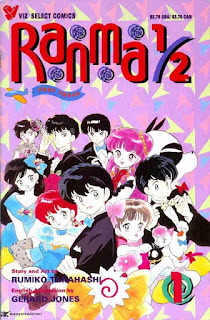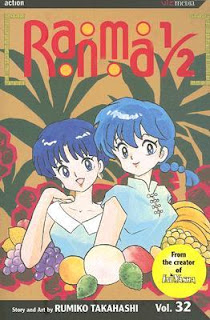The "Tale of One Bad Rat" by Bryan Talbot was written as a mini series that came out as a monthly issue in three parts. Oh man! This one got me in the feels. It is an extremely well done comic, the growth of the character as well as the use of Beatrix Potter's books was beautifully executed. The main character has trouble dealing with the sexual abuse from her father and the verbal abuse from her mother. One of her only happy memory from her childhood is Beatrix Potter's books, she relates to the author not only by sharing a similar name but also a similar life story. The novel starts out with Helen, when she is homeless and contemplating suicide. The only thing that is keeping her from acting on her impulse is her found friend a cute little pet rat. The last section of the comic is about Helen Potter visiting Beatrix Potter's home, and imagines finding a lost Potter book "The Tale of One Bad Rat". The comic changes format and style and reads as if it is a Beatrix potter book, this book within a comic story echoes Helen's own story and gives a happy ending. The end of the comic has her confronting her father and truly being free of that burden. This freedom is shown by the last scene of Helen in the countryside besides a lake drawing her own sketches.
I personally, really could relate to a lot of this comic, from the love of the unloved and powering through a sexual trauma. So I really could understand the feelings and the shame of what Helen was talking about. How one puts the blame on oneself and how hard it is to get to a place where you are comfortable within your own skin again. It also made me glad and appreciate all the help and support that I did get, from seeing how bad it could have been. The use of rats in a positive light with in the story was very refreshing. I really liked that element. I grew up with having pet rats, so that just made the comic for me. Especially because Remmy, my pet rat, looked just like the rat in the story.
Saturday, November 18, 2017
Persepolis
My first introduction to Persepolis by Marjane Satrapi was in Development of Art and Ideas, where I watched the movie adaptation of the graphic novel. The move took a lot of its story from the novels but in order to fit it in a film there had to be a lot of editing the story down into a more digestible narrative. The comic on the other hand had a lot more substance to it, and was able to go more into depth as well as tell more stories. The first part of Persepolis is a semi biographical work based off her childhood growing up in Iran during the 70's, during the Iraq and Iran wars as well as the overthrow of the monarchy. The whole first part of the two part graphic Novel is a relatively short part of the movie. A lot of the description of the books she was reading at the time as well as the talks with her mother about her grandfather did not make it into the film. In an interview from Movieweb with Marjane Satrapi, she describes adapting the novel. In order to do this she had to forget about the book and take the material and make it into a cinematic language. It is also interesting how she never wanted the novel to become a film, but the only reason she said 'yes' to the project was because a friend of hers wanted to become a producer. In the interview on of the questions was about if she wanted to give the world a Iranians Womans perspective and her response was that she wanted to give a personal perspective and it just happens that she is a woman. The reason this story did so well as both a graphic novel as well as a movie was because it was not trying to make a political, sociological or religious statement, the main statement is that of a humanist. "Human-beings anywhere are the same, because they have the right to live, because they have dreams, because they have love, because they have parents and kids. The life for all of us is worth something, to understand that the situation is not as easy as we think."-Marjane Satrapi 2010. Both the Book and the movie, have the same narrative points as well as the human perspective with a personal touch. The topics and story are complicated and down to earth, and that is what makes this story brilliant.

If you want to listen to her interview here is the link, she has a lot of really good and interesting points she makes about the movie was well as the novel.
https://www.youtube.com/watch?v=v9onZpQix_w

If you want to listen to her interview here is the link, she has a lot of really good and interesting points she makes about the movie was well as the novel.
https://www.youtube.com/watch?v=v9onZpQix_w
Friday, November 17, 2017
The Bus by Paul Kirchner
Brilliant, absurd, surreal, and hysterical! I think this is one of my favorite comics by far. The humor reminded me a lot of one of my favorite books "Hitch Hikers Guide to the Galaxy" by Douglas Adams. It is the same absurd and dark humor that "The Bus" by Paul Kirchner uses. Hitch Hikers guide first book ends with the earth being destroyed in order to make way for a trans-galactic highway, to me this wait forever past your death for a bus to arrive way to late is the same dark absurdest comedy.
I don't have much to say on this comic besides that I really enjoyed reading it and I wanted more after I was done. So I went and found more. these are two videos inspired by the comic. the first of which is a short animation taken directly from the comic. it is just a moving version, most if not all of the frames where taken directly from the comic. the second video is... well I don't really know there was no description but I thought it was silly and you might get a giggle out of it, so enjoy.
https://www.youtube.com/watch?v=8yn942nxFE4
https://vimeo.com/37149690
I don't have much to say on this comic besides that I really enjoyed reading it and I wanted more after I was done. So I went and found more. these are two videos inspired by the comic. the first of which is a short animation taken directly from the comic. it is just a moving version, most if not all of the frames where taken directly from the comic. the second video is... well I don't really know there was no description but I thought it was silly and you might get a giggle out of it, so enjoy.
https://www.youtube.com/watch?v=8yn942nxFE4
https://vimeo.com/37149690
Monday, November 13, 2017
Ranma 1/2
I never really read any manga, but I did quiet enjoy reading Ranma. It has a silly stupid sense of humor and crazy lovable characters. I do find it amusing how much fan service there is, it is objectively worse then Marvel or DC. Even with all the unnecessary amount of female nudes, it is still follishly fun time.
In class there was mention that the manga got an anime adaptation. So I decided to look into it. When I was reading the comic, I thought that Ranma and his female form would look the same, such as having the same hair, ect. In the comic Ranma is stuck in his female form but needed to be in his male form, so he dress up like a man in order to convinced other that he is the male Ranma. To the surprise of the other cast member Ranma's plan worked. Also in the comic people keep wondering connection between the make and female Ranma, and one of the feature pointed out was they had the same hair. In the animation they gave his female version red hair and this male version black hair, I find this a bit perplexing. I can't think of an artistic reason to do this. I wondered why this choice was made. If it was to make a bigger point about how his female form is not him and its very separate from his identity or just to add a pop of color.
In class there was mention that the manga got an anime adaptation. So I decided to look into it. When I was reading the comic, I thought that Ranma and his female form would look the same, such as having the same hair, ect. In the comic Ranma is stuck in his female form but needed to be in his male form, so he dress up like a man in order to convinced other that he is the male Ranma. To the surprise of the other cast member Ranma's plan worked. Also in the comic people keep wondering connection between the make and female Ranma, and one of the feature pointed out was they had the same hair. In the animation they gave his female version red hair and this male version black hair, I find this a bit perplexing. I can't think of an artistic reason to do this. I wondered why this choice was made. If it was to make a bigger point about how his female form is not him and its very separate from his identity or just to add a pop of color.
I was looking up example to show on the blog and I found that there was a multitude of colors used in for the comic cover. I read the comic in black and white, so in my head every one had black or dark brown hair. But this is not true, Ranma's hair is an enigma and color is relative. In character design usually you stick to iconic characteristics and color is among one of then.
Even from cover to cover everyones colors change, there is no consistency. I am convinced it might just be dependent of the mood of the colorist.
In the TV show his female form is just a red head. Which is not as fun as the manga covers that constantly switch and ever change the colors of the cast. I would like to say that they are quite the colorful cast.
Sunday, November 5, 2017
Heavy Metal
For last weeks class on World
Wide comics, I read Heavy Metal, which was the American version of the French
comic Métal Hurlant. This comic is a collection of short stories in
the sci-fi and fantasy genera, each story has a different artist.
Many of the French artists that illustrated for Métal
Hurlant also worked on Heavy Metal. The first story
in Heavy Metal is Arzak, it is
a wordless comic about a guy driving across the desert in
order to fix something. This story is one out of four short
stories created by Jean "Moebius" Giraud.
Moebius's illustrations for this comic are extremely beautiful.
The line work and simple color and composition drew me in. I also really
enjoyed the look of the Sci-Fi worlds that he created, they reminded me a
lot of the movie Nausicaä of the Valley of the Wind. The
stories are not similar at all, but I believe that some of
the visual direction for this movie was inspired
by Moebius's work.


The top image is from Arzak and the bottom is a still image for the trailer of Nausicaä of the Valley of the Wind. It is easy to see the influence of Moebius in the shape language, color composition and even the basic color scheme and costume design of the lead protagonists.



Subscribe to:
Posts (Atom)















